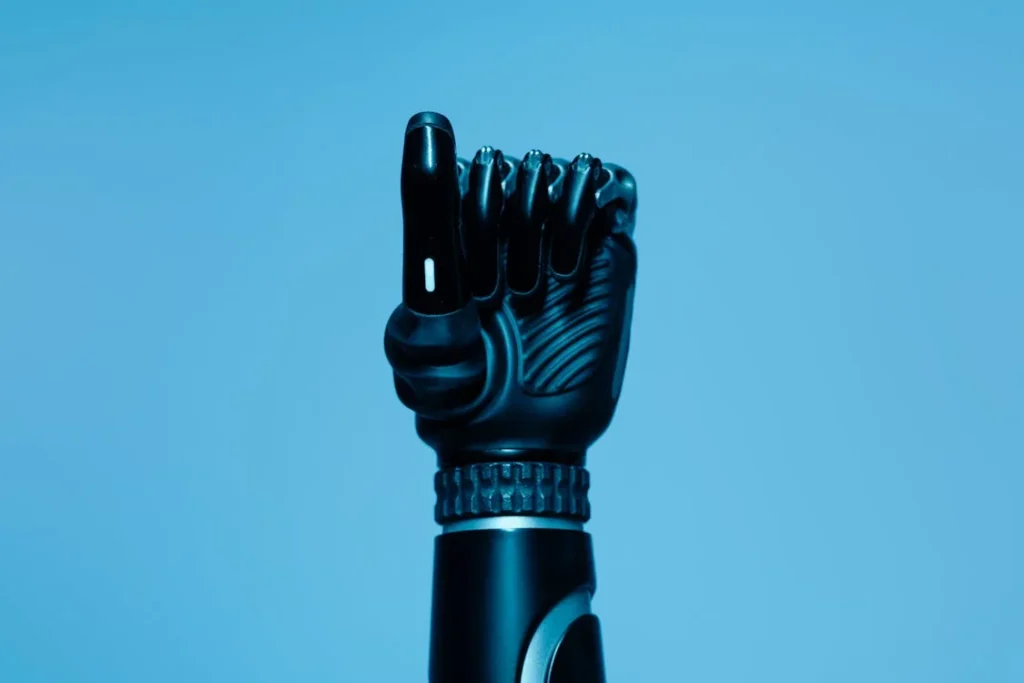Technology has changed the way we see prosthetic limbs. In the past, prosthetics were simple mechanical replacements for lost limbs, allowing only basic movement. Today, bionic prosthetics are revolutionizing the field, giving users control, flexibility, and even a sense of touch.
But how do these high-tech limbs work? What makes them different from traditional prosthetics? And most importantly, how can they improve the lives of people who use them?
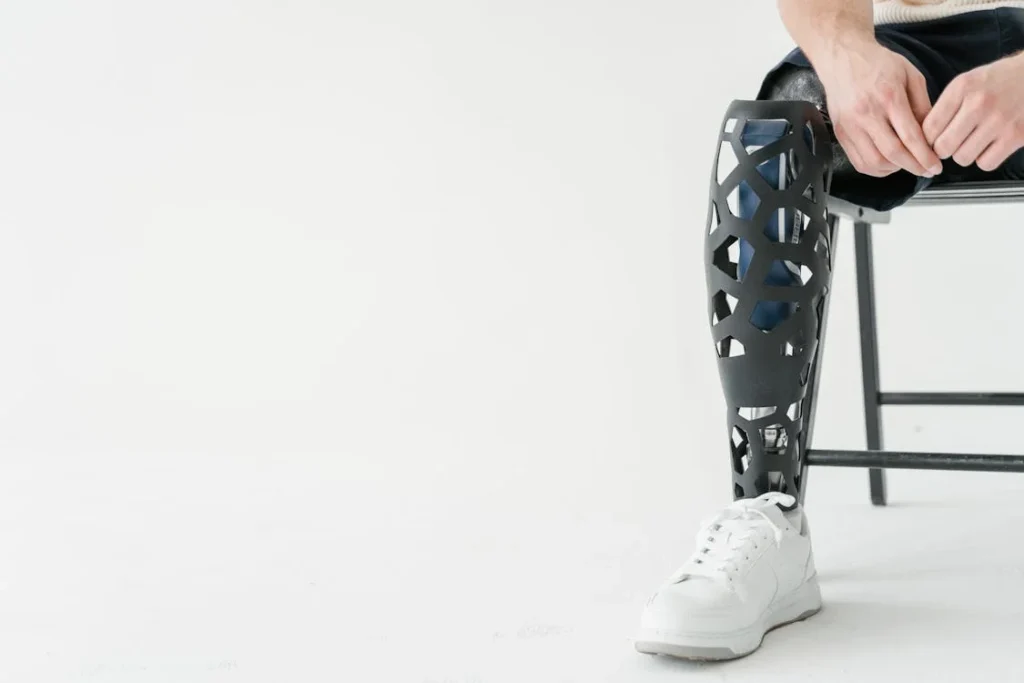
Understanding the Basics of Bionic Prosthetic Limbs
Bionic prosthetic limbs are designed to function as closely as possible to natural limbs. Unlike traditional prosthetics, which rely on mechanical movement, bionic limbs use advanced technology to create more natural and controlled motions.
These prosthetics are powered by sensors, motors, and microprocessors that help the user move the limb with precision.
At the heart of bionic limbs is the ability to connect with the user’s body. Many modern bionic prosthetics, like Grippy™ by Robobionics, use muscle signals to control movement.
This technology allows the user to operate the prosthetic just by thinking about moving, making the experience more intuitive and natural.
The Role of Myoelectric Sensors
One of the key technologies behind bionic limbs is myoelectric control. The human body naturally produces electrical signals when muscles contract. These signals are generated by the brain and sent through nerves to muscles, telling them to move.
Bionic limbs have sensors placed inside the prosthetic socket, which pick up these tiny electrical signals from the muscles in the residual limb.
When the user tries to move their missing hand or leg, these sensors detect the muscle activity and translate it into movement. This process happens almost instantly, allowing for smooth and responsive control.
For example, a person using a bionic hand can open and close their fingers simply by contracting the right muscles in their arm. The prosthetic interprets these signals and moves accordingly, making actions like gripping a cup or shaking hands feel natural.
Microprocessors: The Brain of a Bionic Limb
Bionic limbs do not just move—they also adapt to the user’s needs. This is possible because of microprocessors, which act as the “brain” of the prosthetic. These tiny computers process information from the sensors and adjust the limb’s movement in real-time.
In a bionic leg, for instance, microprocessors help regulate knee and ankle movement. If the user is walking on an uneven surface, the prosthetic can automatically adjust the angle and pressure to provide better stability.
This prevents falls and makes walking more comfortable.
Similarly, bionic hands with microprocessors can recognize different grip patterns. This means the user can switch from a firm grip for holding a heavy object to a gentle touch for holding something fragile, like an egg.
The microprocessor ensures that the right amount of force is applied, making everyday tasks easier and safer.
Motors and Actuators: Bringing Movement to Life
A bionic limb needs power to move. Unlike traditional prosthetics, which rely on body strength or mechanical hinges, bionic limbs use small motors and actuators to generate movement.
These components act like artificial muscles, allowing the limb to move in a way that closely mimics natural motion.
Motors are placed in key areas of the prosthetic, such as the fingers of a bionic hand or the joints of a bionic leg. When the microprocessor receives a signal from the myoelectric sensors, it sends a command to the motors, telling them how to move.
This makes it possible for the prosthetic to bend, rotate, or grip objects with precision.
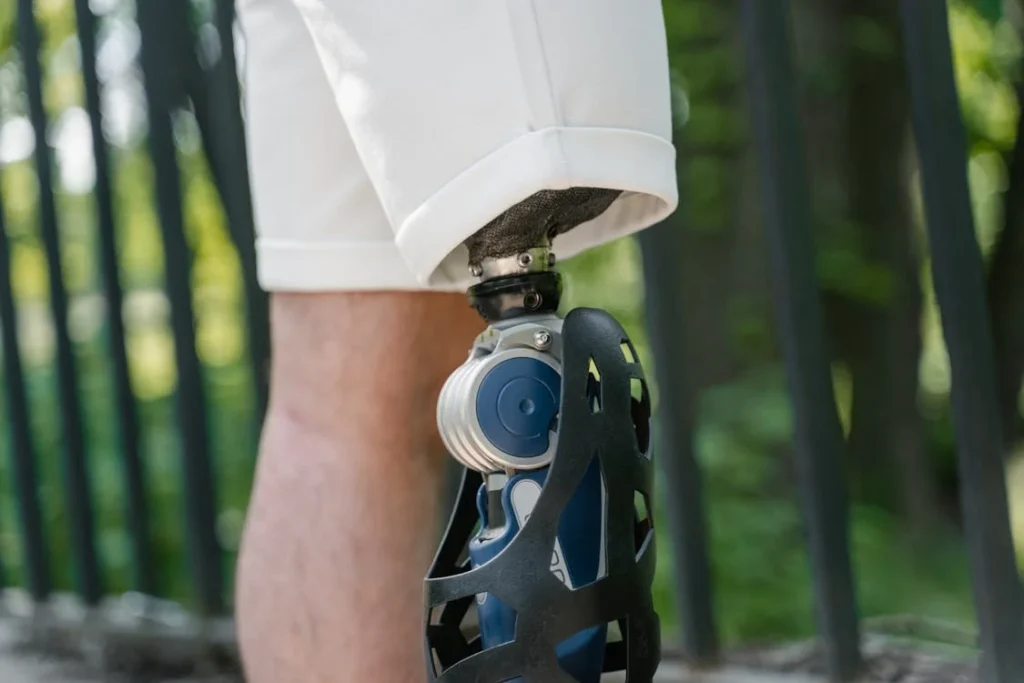
How Bionic Prosthetic Limbs Communicate with the Body
One of the most fascinating aspects of bionic prosthetics is how they communicate with the user’s body.
Unlike traditional prosthetics, which require manual adjustments or body-powered mechanisms, bionic limbs work seamlessly with the nervous system and muscles to create a more natural experience.
The Connection Between the Brain and the Prosthetic
Every movement we make starts with a thought. When you decide to move your arm, your brain sends electrical signals through your nerves to activate the right muscles. In a person with a missing limb, these signals still exist, even though the limb is no longer there.
Bionic prosthetics take advantage of this by using sensors to detect these signals and translate them into movement. When the user thinks about moving their bionic limb, the prosthetic picks up muscle signals in the residual limb and responds accordingly.
This process happens in real-time, allowing for smooth and natural movement.
For example, if a person with a bionic hand wants to pick up a spoon, they do not need to press buttons or adjust controls. Instead, they simply think about closing their hand, and the prosthetic responds instantly by gripping the object.
The more the user practices, the more natural and effortless the movements become.
Sensory Feedback: Can Bionic Limbs “Feel”?
A major challenge in prosthetics has always been the lack of sensation. Traditional prosthetics allow movement, but they do not provide any feedback to the user. This means that the person has to rely on sight to know how much force they are applying when holding an object.
However, modern bionic limbs are changing this by introducing sensory feedback technology. Some advanced bionic hands, like Grippy™ by Robobionics, are equipped with pressure sensors in the fingertips.
These sensors detect how much force is being applied and send signals back to the user.
Although users may not experience sensation in the same way as they would with a natural limb, this feedback helps them control the prosthetic more accurately.
Instead of squeezing too hard and crushing a delicate object, they can adjust their grip based on the feedback from the prosthetic.
In some experimental prosthetics, researchers are even working on direct nerve stimulation. This means that electrical signals from the prosthetic are sent directly to the nerves in the arm, allowing the brain to interpret them as real touch sensations.
While this technology is still in its early stages, it represents an exciting future for bionic limbs.
Wireless and AI-Powered Prosthetics
The latest innovations in bionic prosthetics involve artificial intelligence (AI) and wireless technology. Some modern prosthetics are designed to learn from the user’s movements, adapting over time to become more intuitive.
AI-powered prosthetics can analyze muscle signals and movement patterns, improving responsiveness. This means that the more a person uses their bionic limb, the better it gets at predicting their intentions.
For example, a bionic hand with AI might learn that a user often switches between a pinch grip and a firm grip, making those transitions faster and smoother over time.
Wireless technology is also making prosthetics more advanced. Some bionic limbs connect to mobile apps, allowing users to customize settings, adjust grip strength, and track their usage patterns.
This level of personalization ensures that each user gets the most out of their prosthetic.
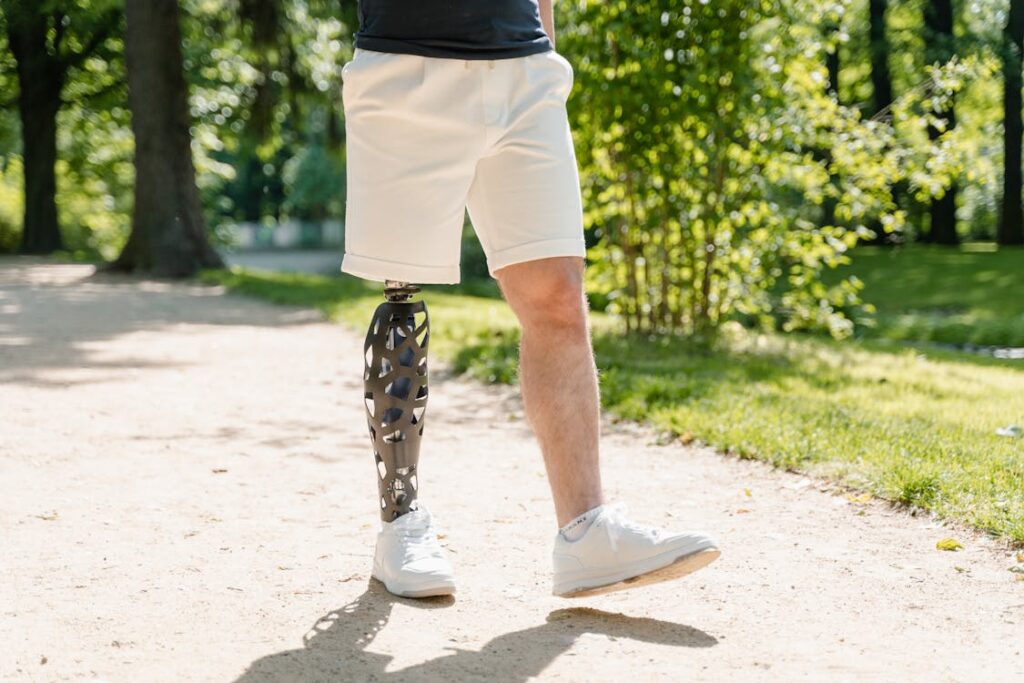
Powering a Bionic Prosthetic: How Do They Get Energy?
Bionic prosthetic limbs rely on power to function, unlike traditional prosthetics, which are purely mechanical. Since they contain motors, microprocessors, and sensors, they need a reliable energy source to operate efficiently.
Without power, a bionic limb would not be able to move, adjust, or process signals from the user’s muscles. Understanding how these prosthetics are powered helps users maintain their devices properly and maximize performance.
Rechargeable Batteries: The Heart of a Bionic Limb
Most modern bionic limbs run on rechargeable batteries, which supply the energy needed to operate motors, sensors, and artificial intelligence features.
These batteries are lightweight and designed to last several hours, allowing users to go through daily activities without frequent interruptions.
Battery life varies depending on the complexity of the prosthetic. A basic bionic hand with simple open-and-close functions may last an entire day on a single charge, while an advanced prosthetic with multiple grip patterns and sensory feedback may require charging more often.
Many users get into the habit of charging their prosthetic overnight, just like they would with a smartphone, ensuring it is ready to use the next day.
Some bionic prosthetics come with removable battery packs, making it easy for users to swap out a drained battery for a fully charged one.
This feature is especially useful for those who wear their prosthetics for long hours or have demanding lifestyles that require extended battery life.
How Much Power Does a Bionic Limb Use?
The power consumption of a bionic limb depends on how often and how intensely it is used.
A user who performs many high-energy movements, such as lifting, gripping, or walking for long distances, will drain the battery faster than someone who only uses their prosthetic for occasional tasks.
Smart energy management systems in modern bionic limbs help extend battery life by adjusting power usage based on activity. Some prosthetics enter a low-power mode when they are not in use, conserving energy and allowing the battery to last longer.
Advanced bionic limbs also use microprocessors to optimize movement, ensuring motors only activate when necessary, reducing unnecessary energy consumption.
The Future of Powering Bionic Prosthetics
Researchers are exploring new ways to power bionic prosthetics, making them more efficient and convenient for users. One promising area of development is energy harvesting, where the prosthetic generates power from the user’s own movements.
This concept, similar to how some smartwatches charge from motion, could significantly extend battery life and reduce reliance on external charging.
Another exciting innovation is wireless charging, which would allow users to charge their prosthetic without plugging it in. Future bionic limbs may come with wireless charging docks or even charging pads embedded in clothing or furniture, making the process effortless.
Advancements in battery technology, such as longer-lasting lithium-ion cells and flexible batteries, are also improving the user experience.
As technology evolves, bionic prosthetics will become even more energy-efficient, reducing the need for frequent charging and allowing users to enjoy seamless functionality throughout the day.
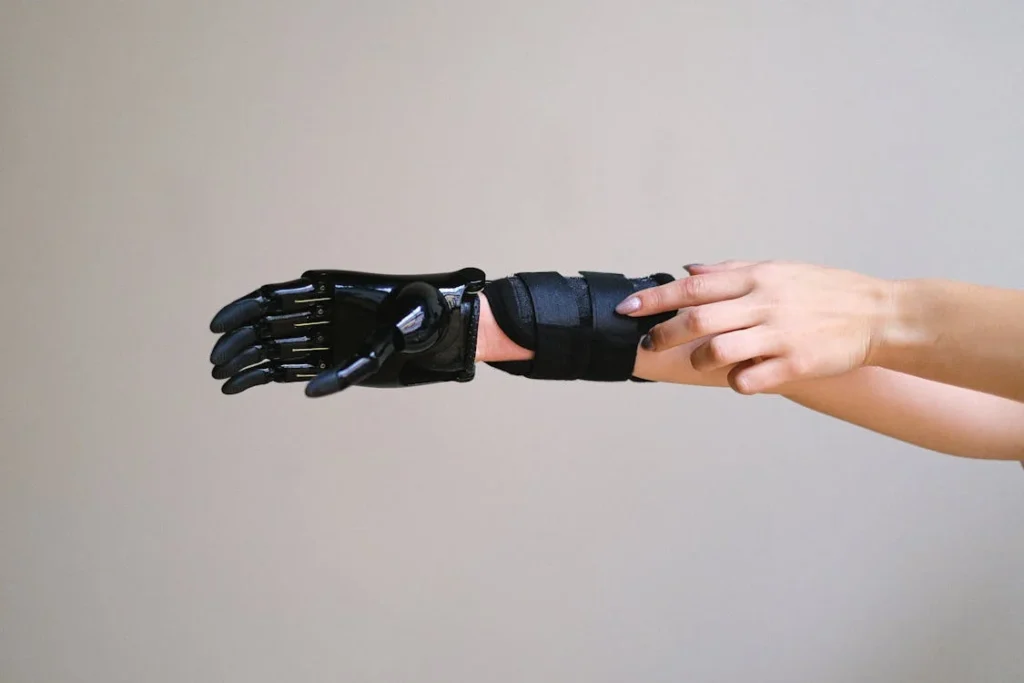
The Real-World Impact of Bionic Prosthetics
Bionic prosthetics are more than just high-tech devices—they have a real and life-changing impact on the people who use them. From restoring independence to opening up new career opportunities, these advanced limbs help users regain confidence and live fuller lives.
While the technology behind bionic prosthetics is impressive, what truly matters is how they improve daily life for individuals who rely on them.
Regaining Independence and Confidence
One of the biggest benefits of bionic prosthetics is the ability to perform everyday tasks with ease. Simple activities like holding a cup, buttoning a shirt, or using a smartphone become second nature again.
For many users, this newfound independence is life-changing. They no longer have to rely on others for assistance and can regain control over their own lives.
For individuals with upper limb loss, a bionic hand allows them to perform delicate and precise movements that would be difficult with a traditional prosthetic.
Advanced grip patterns enable users to type on a keyboard, cook meals, or even play a musical instrument. This level of dexterity helps users feel more in control and capable, improving their overall self-esteem.
For those with lower limb loss, bionic legs with microprocessor-controlled knees and ankles make walking feel more natural. The prosthetic adjusts in real-time to different surfaces, reducing the risk of falls and allowing users to walk with greater confidence.
Whether navigating stairs, walking on uneven ground, or standing for long periods, a bionic limb provides the support needed for everyday mobility.
Returning to Work and Hobbies
Bionic prosthetics open up new opportunities for users to return to work, pursue careers, and engage in hobbies they love. Many professions require fine motor control, balance, or endurance—things that a well-designed bionic limb can provide.
For example, an office worker using a bionic hand can type, write, and operate a computer with ease. A chef can chop vegetables and prepare meals with confidence, thanks to precise grip control.
Even physically demanding jobs, such as construction or mechanics, become possible with the right prosthetic technology.
Beyond work, bionic prosthetics also help users enjoy hobbies and recreational activities. Whether it’s painting, cycling, playing a musical instrument, or participating in sports, advanced prosthetic limbs provide the flexibility needed to engage in these passions.
Some bionic legs are even designed specifically for running or other athletic activities, allowing users to stay active and compete in sports.
Reducing Physical Strain and Fatigue
Traditional prosthetics, while functional, often require users to compensate by overusing other parts of their body. This can lead to muscle strain, joint pain, and long-term physical discomfort.
Bionic prosthetics help solve this problem by mimicking natural movement and reducing the physical effort required.
For upper limb prosthetic users, a bionic hand that responds to muscle signals eliminates the need for shoulder or back strain caused by mechanical harnesses. This makes daily tasks feel more fluid and natural.
For lower limb prosthetic users, microprocessor-controlled knees and ankles reduce impact on the rest of the body. These smart limbs absorb shock and adapt to movement, preventing knee and hip problems that are common with traditional prosthetics.
As a result, users experience less fatigue and can stay active for longer periods without discomfort.
Emotional and Social Benefits
Beyond the physical advantages, bionic prosthetics also play a major role in emotional well-being. Many individuals who experience limb loss struggle with self-confidence and body image.
A high-tech, functional prosthetic can help shift the focus from loss to capability, empowering users to embrace their new reality with confidence.
The ability to interact naturally with others also improves social engagement. A bionic hand with responsive movement makes handshakes and gestures feel more natural, while a bionic leg that enables smooth walking allows users to move comfortably in social settings.
These small but meaningful improvements help users feel more included, reducing feelings of isolation.
At Robobionics, we have seen firsthand how bionic prosthetics transform lives. Our mission is to make these life-changing devices more accessible and affordable so that more people can experience the benefits of advanced prosthetic technology.
With solutions like Grippy™, we are helping individuals regain their independence, confidence, and freedom to live without limits.
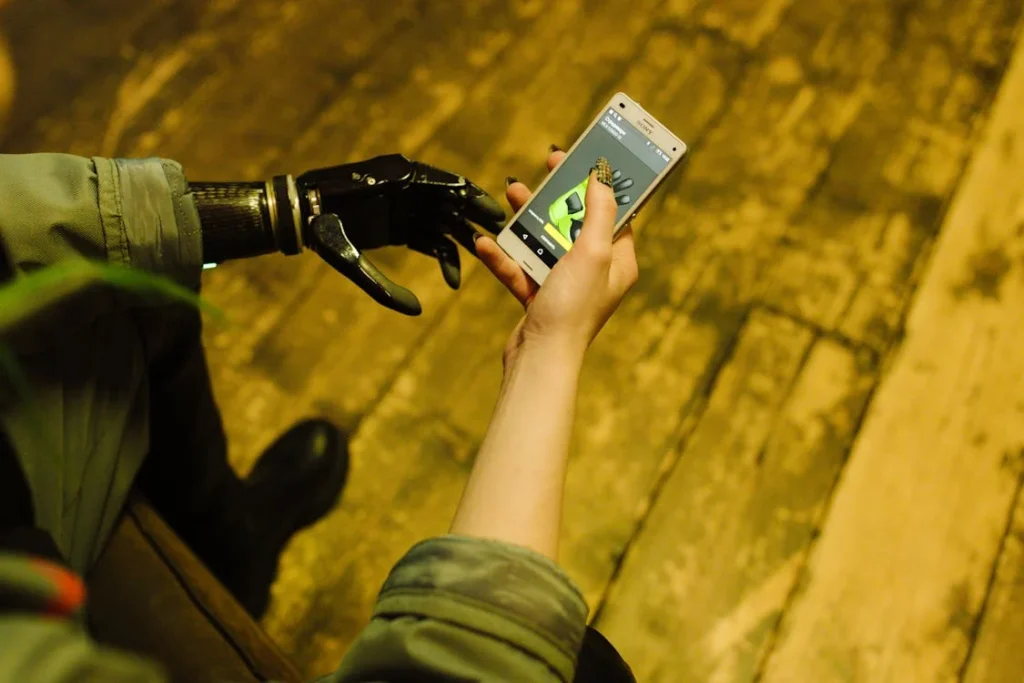
The Future of Bionic Prosthetics: What’s Next?
Bionic prosthetics have already transformed the lives of many people, but technology is constantly evolving. Researchers and engineers are working on innovations that will make prosthetic limbs even more intuitive, natural, and accessible.
The goal is to create prosthetics that feel and function just like real limbs, giving users an even greater sense of freedom and independence.
Mind-Controlled Prosthetics: The Next Frontier
One of the most exciting advancements in bionic technology is the development of mind-controlled prosthetics. While current bionic limbs rely on muscle signals for movement, future prosthetics may be directly controlled by the brain.
Scientists are exploring ways to connect prosthetic limbs to the nervous system, allowing users to move their artificial limbs as effortlessly as they would a natural one.
Some experimental prosthetics already use brain-computer interfaces (BCIs) to detect neural signals and translate them into movement. Instead of relying on muscles, these prosthetics pick up electrical signals from the brain, bypassing the need for remaining muscle tissue.
This breakthrough could make bionic limbs accessible to people with high-level amputations or conditions that limit muscle control.
Artificial Skin for a Sense of Touch
One of the biggest challenges in prosthetic technology is restoring the sense of touch. While modern bionic hands offer grip control and pressure sensors, they do not yet provide true sensory feedback.
Researchers are working on artificial skin that can detect temperature, pressure, and texture, allowing users to “feel” through their prosthetic limb.
This artificial skin uses flexible sensors and advanced materials that mimic the way human skin responds to stimuli. When paired with nerve-stimulation technology, it could one day allow prosthetic users to experience sensations similar to natural touch.
This would make everyday interactions—such as shaking hands or feeling the warmth of a cup of coffee—much more intuitive.
Lighter, Stronger, and More Affordable Materials
Weight and durability are always concerns when it comes to prosthetic limbs. Heavy prosthetics can cause fatigue, while fragile ones may not withstand daily wear and tear.
Researchers are developing new lightweight materials, such as advanced carbon fiber and bioengineered polymers, to create stronger yet more comfortable prosthetics.
At the same time, manufacturers are working on reducing costs. High-tech bionic prosthetics can be expensive, making them inaccessible to many people.
Companies like Robobionics are committed to developing cost-effective solutions like Grippy™, ensuring that more users can access life-changing prosthetic technology without financial strain.
Wireless Connectivity and Smart Prosthetics
Future prosthetics will be smarter and more connected. Some modern bionic limbs already come with mobile apps that allow users to customize settings and track their movement patterns.
In the future, prosthetics may integrate directly with smartphones, smartwatches, or even home automation systems.
This means users could adjust their prosthetic’s grip strength, sensitivity, or movement style with a simple voice command or app setting. AI-powered prosthetics may also learn from the user’s habits, automatically adjusting movement patterns to make daily tasks even smoother.
Personalized and 3D-Printed Prosthetics
Customization is becoming a key focus in prosthetic development. No two people have the same needs, and prosthetics should be tailored to fit each individual’s lifestyle.
With 3D printing technology, prosthetic limbs can now be designed and manufactured to match a user’s exact requirements.
3D-printed prosthetics allow for greater personalization in terms of size, shape, and function. They are also more affordable to produce, reducing the overall cost of bionic limbs.
As this technology advances, we may see a future where anyone who needs a prosthetic can have one custom-made in just a few days.
The Road Ahead
The future of bionic prosthetics is incredibly promising. With advancements in brain-controlled movement, sensory feedback, lightweight materials, and AI-powered technology, prosthetic limbs will continue to become more lifelike and functional.
As accessibility improves, more people will be able to experience the benefits of bionic technology, leading to a world where limb loss no longer means a loss of independence.
At Robobionics, we are proud to be part of this exciting journey. Our mission is to make advanced prosthetics more accessible, ensuring that every user gets the best possible experience.
If you want to explore how bionic technology can improve your life, book a free demo of Grippy™ today and take the first step toward a future without limits.
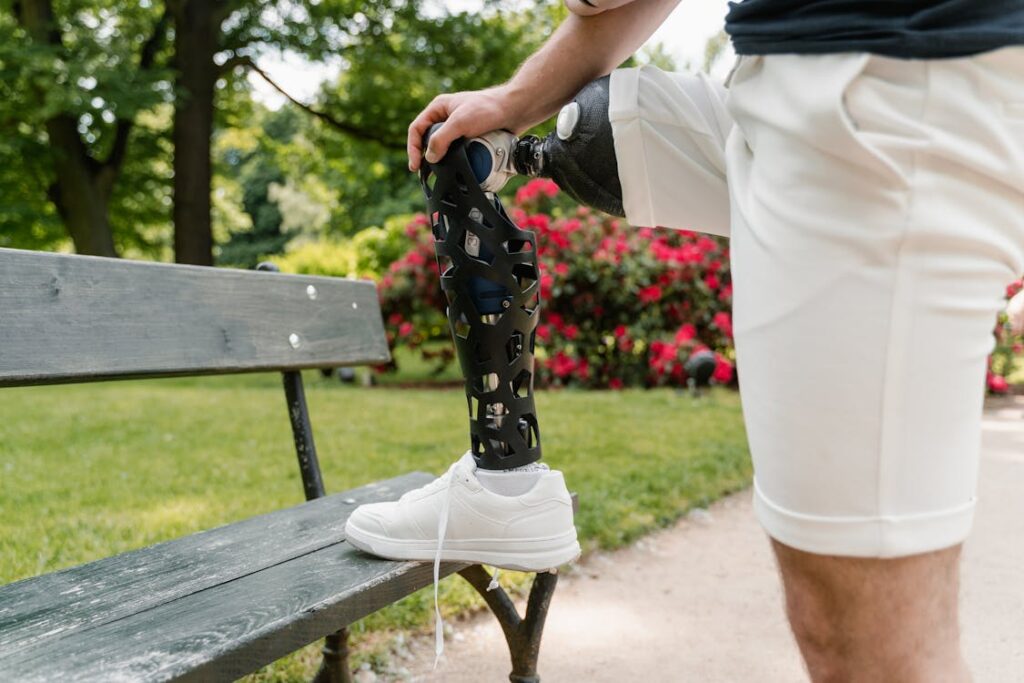
Overcoming Challenges with Bionic Prosthetics
While bionic prosthetics offer incredible advancements in mobility and independence, they also come with challenges. From affordability to adaptation, users often face hurdles on their journey to using these advanced limbs effectively.
Understanding these challenges and how to overcome them can help users make informed decisions and get the most out of their prosthetic experience.
The Learning Curve: Adapting to a Bionic Limb
One of the biggest challenges of using a bionic prosthetic is the adjustment period. Unlike traditional prosthetics, which rely on simple mechanical movement, bionic limbs require users to develop muscle control and coordination.
Since most bionic limbs are operated using myoelectric signals from muscles, users must learn how to activate the right muscles to control movements effectively.
For new users, this process can take time. Some people may experience frustration in the beginning, especially when trying to perform fine motor tasks like picking up small objects or adjusting their grip strength.
However, with practice and proper training, movements become smoother and more natural.
To make this transition easier, Robobionics offers gamified rehabilitation programs, turning training exercises into engaging activities. This helps users build muscle memory and confidence in a fun, stress-free way, making the adaptation process much more enjoyable.
Maintenance and Repairs: Keeping a Bionic Limb Functional
Since bionic prosthetics rely on electronic components, they require regular maintenance to function properly.
Unlike traditional prosthetics, which only need occasional adjustments, bionic limbs may need software updates, battery charging, and repairs if a component malfunctions.
Common maintenance tasks include ensuring that sensors are clean and responsive, keeping batteries charged, and updating firmware to improve performance. In case of damage, users must have access to reliable repair services.
At Robobionics, we offer quick and efficient maintenance solutions to ensure that users can keep their prosthetic in optimal condition without long downtime.
Cost and Accessibility: Making Bionics More Affordable
One of the biggest barriers to bionic prosthetics is cost. Because these limbs use advanced technology, they are often more expensive than traditional prosthetics. This makes them less accessible to people who may benefit from them the most.
At Robobionics, we are committed to making high-quality bionic prosthetics more affordable and accessible. With products like Grippy™, we offer advanced functionality at a competitive price, ensuring that users get the best possible prosthetic without excessive financial burden.
Additionally, we work with organizations and funding programs to help users explore financial assistance options.
Psychological and Emotional Adjustments
Adapting to a bionic limb is not just a physical challenge—it is also an emotional one. Many individuals go through a period of adjustment as they learn to accept and embrace their new prosthetic.
While some users feel empowered by the technology, others may struggle with body image or self-confidence.
Support from family, friends, and prosthetic specialists plays a crucial role in helping users navigate this transition. Peer support groups and rehabilitation programs can also provide encouragement, allowing users to connect with others who have had similar experiences.
At Robobionics, we believe that every user deserves not just a high-quality prosthetic but also the emotional support needed to thrive.
Our team is always available to guide users through their journey, ensuring that they feel comfortable, confident, and empowered every step of the way.
Conclusion
Bionic prosthetic limbs have transformed the way people with limb loss experience the world. With advanced technology, intuitive control, and even sensory feedback, these prosthetics provide a level of independence and mobility that was once unimaginable. By using myoelectric sensors, microprocessors, and AI-driven adaptability, bionic limbs make movement more natural and seamless, allowing users to regain confidence in their daily lives.
However, like any technology, bionic prosthetics come with challenges. Adapting to a new limb takes time, maintenance is necessary, and affordability remains a concern. But as technology evolves, these challenges are becoming easier to overcome. Innovations in materials, artificial intelligence, and accessibility are making bionic limbs more efficient, durable, and cost-effective.
At Robobionics, we are committed to making high-quality bionic prosthetics, like Grippy™, more accessible to everyone. Our goal is to empower users with reliable, affordable, and cutting-edge prosthetic solutions that help them live without limitations.
If you are considering a bionic prosthetic or want to experience the technology firsthand, book a free demo of Grippy™ today. Our team is here to guide you through every step of the journey, helping you regain mobility, confidence, and independence. The future of prosthetics is here—take the first step with Robobionics.



